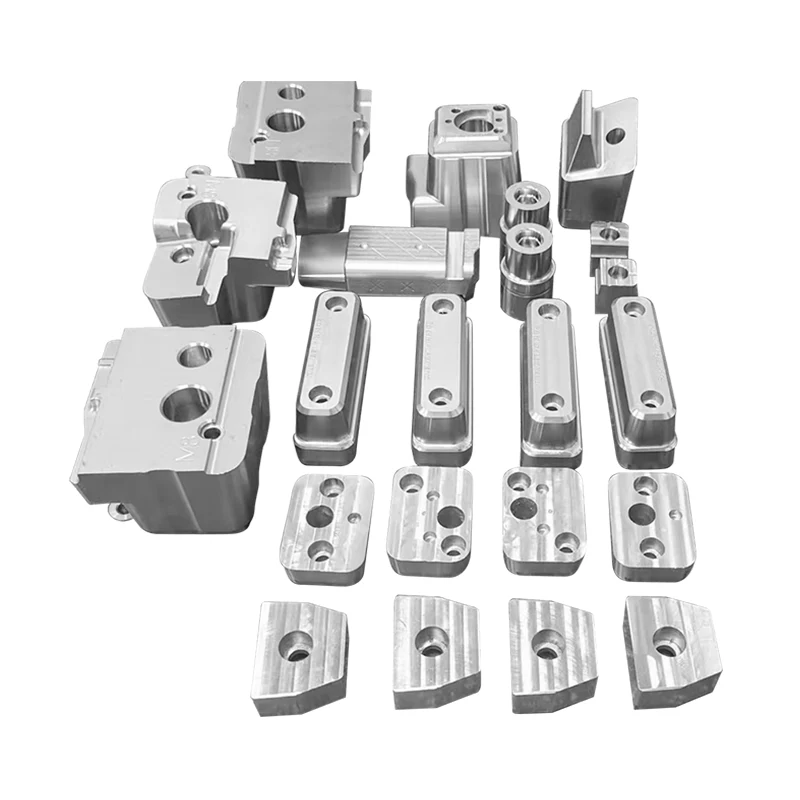- English
- Español
- Português
- русский
- Français
- 日本語
- Deutsch
- tiếng Việt
- Italiano
- Nederlands
- ภาษาไทย
- Polski
- 한국어
- Svenska
- magyar
- Malay
- বাংলা ভাষার
- Dansk
- Suomi
- हिन्दी
- Pilipino
- Türkçe
- Gaeilge
- العربية
- Indonesia
- Norsk
- تمل
- český
- ελληνικά
- український
- Javanese
- فارسی
- தமிழ்
- తెలుగు
- नेपाली
- Burmese
- български
- ລາວ
- Latine
- Қазақша
- Euskal
- Azərbaycan
- Slovenský jazyk
- Македонски
- Lietuvos
- Eesti Keel
- Română
- Slovenski
- मराठी
- Srpski језик
How Do Precise Inserts Improve Accuracy and Efficiency in Manufacturing?
2025-09-19
In the field of advanced manufacturing, accuracy is not just a desirable attribute—it is a fundamental necessity. Whether shaping metals, cutting composites, or machining high-performance alloys, the tools used must deliver consistent precision to meet the demands of today’s industries. Precise Inserts represent one of the most critical components in achieving this balance of accuracy, durability, and efficiency.
A precise insert is a replaceable cutting edge that attaches to a toolholder or machine, enabling manufacturers to perform turning, milling, or drilling operations with exceptional control. These inserts are engineered with specialized geometries, coatings, and materials that make them suitable for handling everything from lightweight aluminum to hardened steels and superalloys. The advantage lies not only in their cutting performance but also in their replaceability—once an insert wears out, it can be swapped without replacing the entire tool, significantly reducing downtime and operational costs.
The growing adoption of precise inserts in industries such as automotive, aerospace, energy, and medical device production highlights their importance in delivering repeatable accuracy, superior surface finishes, and optimized cycle times.
To provide a clear technical overview, the following table presents the key parameters of high-quality Precise Inserts:
| Parameter | Specification |
|---|---|
| Material Composition | Carbide, cermet, ceramic, polycrystalline diamond (PCD), cubic boron nitride (CBN) |
| Geometry | Turning inserts, milling inserts, drilling inserts, threading inserts |
| Coating Options | TiN, TiCN, TiAlN, Al2O3, diamond coatings |
| Tolerance Accuracy | ±0.01 mm or better, depending on application |
| Cutting Edge Design | Sharp, honed, or chamfered, optimized per material |
| Application Range | Steel, stainless steel, cast iron, aluminum, titanium, nickel alloys |
| Replaceability | Standardized interface for quick changeover |
| Wear Resistance | High, with enhanced thermal and mechanical durability |
These specifications highlight why industries rely on precise inserts: they combine technical excellence with the practicality of cost-effective tool management.
How Are Precise Inserts Applied Across Different Industries?
The true value of precise inserts is revealed when analyzing their application across various industries. Their adaptability ensures that manufacturers can achieve high-quality results even under challenging conditions.
1. Automotive Manufacturing
Automotive production relies on high-volume machining where both speed and accuracy matter. Precise inserts are used to:
-
Machine engine blocks and cylinder heads from cast iron or aluminum.
-
Cut transmission components requiring extreme accuracy.
-
Ensure consistent tolerances in mass production to meet safety and performance standards.
2. Aerospace Industry
The aerospace sector demands machining of lightweight but high-strength materials such as titanium alloys and nickel-based superalloys. Precise inserts offer:
-
Superior heat resistance for high-temperature machining.
-
Reduced vibration for complex aerospace geometries.
-
Longer tool life even under demanding conditions.
3. Energy and Power Generation
From turbines to drilling components, energy industries require machining of robust materials. Inserts deliver:
-
Efficiency in cutting hardened steels.
-
Enhanced reliability in producing safety-critical parts.
-
Reduced maintenance downtime through replaceable edges.
4. Medical Device Production
Medical implants and surgical instruments must be produced to exact specifications with flawless surface finishes. Precise inserts support this industry by:
-
Delivering micro-precision in small and delicate components.
-
Supporting stainless steel and titanium machining.
-
Providing repeatability for regulatory compliance.
5. General Engineering and Custom Machining
Across smaller workshops and large-scale facilities, precise inserts streamline machining tasks by enabling fast, accurate, and cost-efficient processes for varied applications.
By serving across industries, these inserts demonstrate versatility while remaining tailored to each sector’s unique challenges.
How Do Precise Inserts Contribute to Productivity, Quality, and Cost Savings?
The impact of precise inserts extends beyond their physical design. They contribute directly to business outcomes by improving productivity, enhancing quality, and reducing costs.
1. Productivity Benefits
Precise inserts minimize downtime by offering quick-change solutions. Rather than halting production for full tool replacement, workers simply replace the worn insert and resume machining. This leads to:
-
Faster cycle times.
-
Reduced unplanned stoppages.
-
Higher overall output.
2. Quality Advantages
The consistent geometries and sharpness of precise inserts ensure superior surface finishes and tighter tolerances. Whether producing aerospace components or medical devices, the ability to repeat the same high-quality results strengthens trust in the final product.
3. Cost Efficiency
Though inserts represent an investment, their contribution to long-term cost efficiency is undeniable. Manufacturers save money by:
-
Reducing toolholder replacements.
-
Lowering scrap rates through consistent machining.
-
Extending tool life with advanced coatings.
4. Safety and Reliability
A reliable insert reduces the risk of catastrophic tool failure. By maintaining stable cutting forces, they protect both machines and operators, aligning with safety standards across global industries.
How Can Businesses Maximize the Value of Precise Inserts?
For businesses looking to integrate precise inserts into their operations, understanding best practices is crucial. Proper usage ensures maximum return on investment and optimized performance.
Best Practices for Implementation
-
Match Insert to Material: Select carbide, PCD, or CBN based on the workpiece material for optimal results.
-
Use Correct Geometry: Apply turning, milling, or drilling inserts as appropriate to avoid wear and inefficiency.
-
Leverage Coatings: TiAlN and diamond coatings extend tool life, especially in high-heat environments.
-
Monitor Wear Patterns: Regular inspection avoids tool failure and maintains consistent quality.
-
Train Operators: Skilled workers who understand insert selection and replacement maximize productivity.
Industry Scalability
Businesses across scales—whether small workshops or multinational corporations—can benefit from inserts. Their standardized design means integration is straightforward, supporting scalability and global competitiveness.
Frequently Asked Questions
Q1: How do Precise Inserts differ from traditional cutting tools?
Traditional cutting tools often require full replacement when worn, leading to downtime and higher costs. Precise Inserts, however, use replaceable edges designed for quick changeovers. This reduces machine idle time, ensures consistent performance, and extends the life of the overall toolholder system.
Q2: Can Precise Inserts handle high-strength alloys like titanium and Inconel?
Yes. Precise Inserts are specifically engineered with advanced coatings and geometries to withstand extreme heat and cutting forces associated with alloys like titanium and Inconel. They maintain sharpness, resist wear, and provide stable cutting conditions, making them ideal for aerospace and energy industries.
Across industries, Precise Inserts have proven to be a cornerstone of efficient, high-quality machining. By offering repeatable accuracy, reduced downtime, and adaptable solutions for multiple materials, they empower manufacturers to meet today’s stringent performance standards while preparing for tomorrow’s challenges.
Companies seeking dependable solutions in machining technology can benefit from choosing Mudebao as a trusted supplier of Precise Inserts. With a commitment to quality, innovation, and customer-focused service, Mudebao provides inserts that align with both industrial demands and long-term business growth. To learn more about our products and explore customized solutions for your manufacturing needs, we invite you to contact us today.






